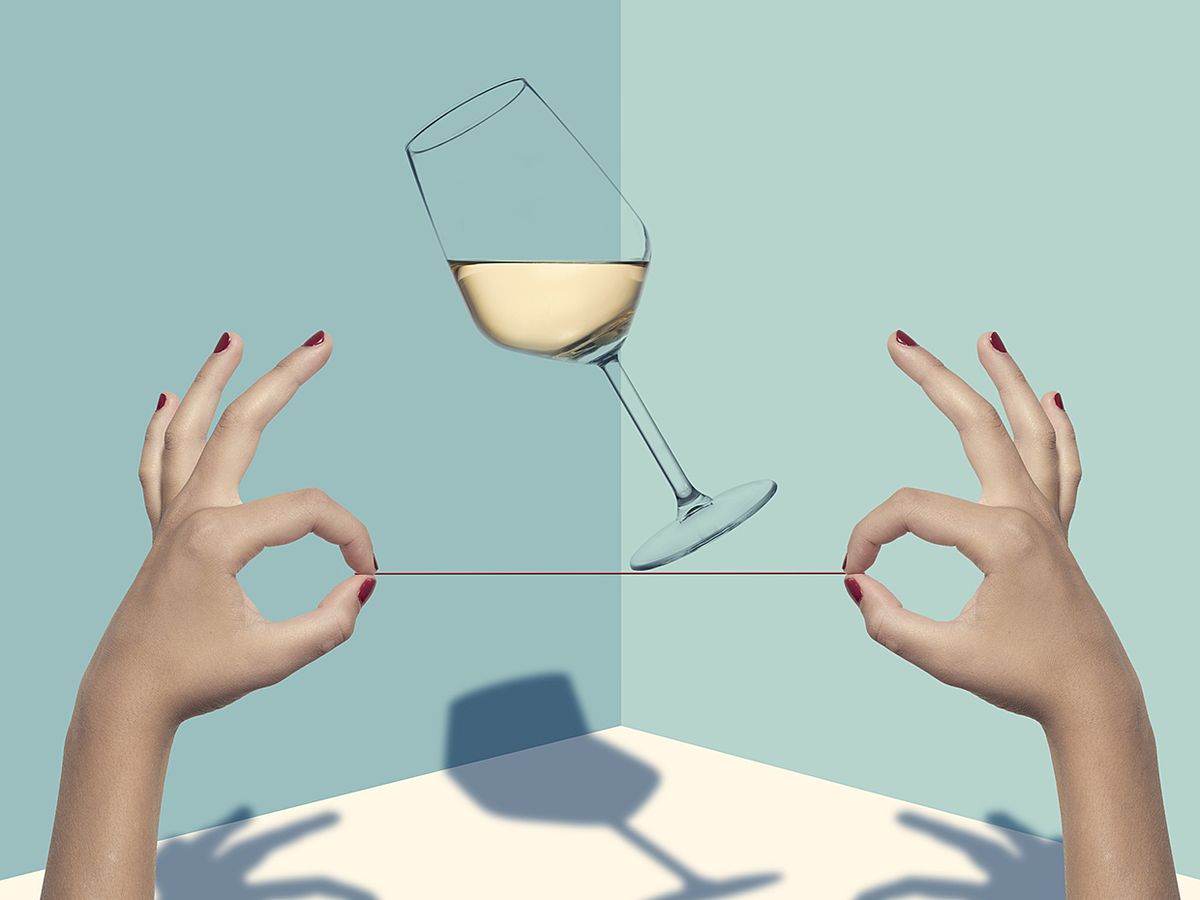France and wine—what an iconic link, and for centuries, how immutable! Wine was introduced by Greeks before the Romans conquered Gaul. Production greatly expanded during the Middle Ages, and since then the very names of the regions—Bordeaux, Bourgogne, Champagne—have become a symbol of quality everywhere. Thus has the French culture of wine long been a key signifier of national identity.
French Wine-drinking Patterns Since 1980

Statistics for French wine consumption begin in 1850 with a high mean of 121 liters per capita per year, which is nearly two glasses per day. By 1890, a Phylloxera infestation had cut the country's grape harvest by nearly 70 percent from its 1875 peak, and French vineyards had to be reconstituted by grafting on resistant rootstocks from the United States. Although annual consumption of wine did fluctuate, rising imports prevented any steep decline in the total supply. Vineyard recovery brought the per capita consumption to a pre-World War I peak of 125 L in 1909, equaled again only in 1924. The all-time record of 136 L was set in 1926, after which the rate fell only slightly to 124 liters per capita in 1950.
Postwar, the French standard of living remained surprisingly low: According to the 1954 census, only 25 percent of homes had an indoor toilet. But rapidly rising incomes during the 1960s brought dietary shifts, notably a decline in wine drinking per capita. It fell to about 95 L in 1980, to 71 L in 1990, and then to 58 L in 2000—about half what it had been a century before. The latest available data shows the mean at just 40 L.
French Wine Drinkers, By Age

France's wine consumption survey of 2015 shows deep gender and generational divides that explain the falling trend. Forty years ago, more than half of French adults drank wine nearly every day; now it's just 16 percent, with 23 percent among men and only 11 percent among women. Among people over 65, the rate is 38 percent; for people 25 to 34 years of age, it is 5 percent, and for 15- to 24-year-olds, it's only 1 percent. The same divides apply to all alcoholic drinks, as beer, liquors, and cider have also seen gradual consumption declines, while the beverages with the highest average per capita gains include mineral and spring water, roughly doubling since 1990, as well as fruit juices and carbonated soft drinks.
Alcoholic beverages are thus fast disappearing from French culture. And although no other traditional wine-drinking country has seen greater declines in absolute or relative terms, Italy comes close, and wine consumption has also decreased in Spain and Greece.
Top Wine Exporters and Importers of French Wine

Only one upward trend persists: French exports of wine set a new record, at about €9.7 billion, in 2018. Premium prices and exports to the United States and China are the key factors. American drinkers have been the largest importers of French wines, and demand by newly rich Chinese has also claimed a growing share of sales. But in the country that gave the world countless vins ordinaires as well as exorbitantly priced Grand Crus Classés, the clinking of stemmed glasses and wishes of santé have become an endangered habit.
This article appears in the April 2020 print issue as “(Not) Drinking Wine."
Vaclav Smil writes Numbers Don’t Lie, IEEE Spectrum's column devoted to the quantitative analysis of the material world. Smil does interdisciplinary research focused primarily on energy, technical innovation, environmental and population change, food and nutrition, and on historical aspects of these developments. He has published 40 books and nearly 500 papers on these topics. He is a distinguished professor emeritus at the University of Manitoba and a Fellow of the Royal Society of Canada (Science Academy). In 2010 he was named by Foreign Policy as one of the top 100 global thinkers, in 2013 he was appointed as a Member of the Order of Canada, and in 2015 he received an OPEC Award for research on energy. He has also worked as a consultant for many U.S., EU and international institutions, has been an invited speaker in more than 400 conferences and workshops and has lectured at many universities in North America, Europe, and Asia (particularly in Japan).



